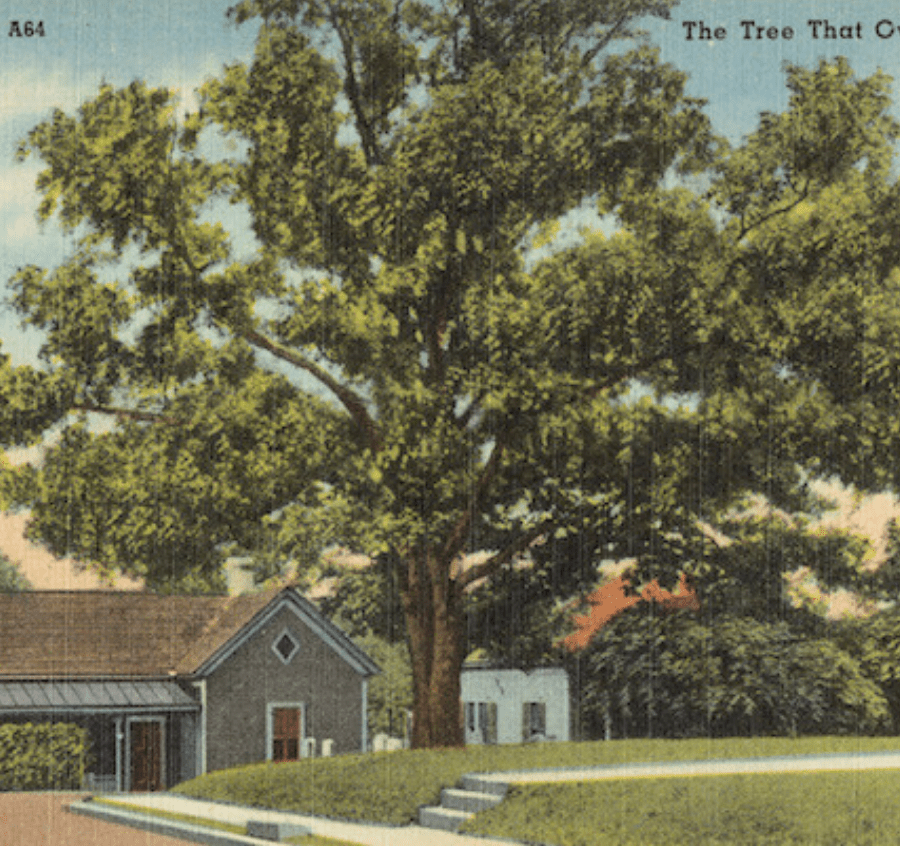Let me tell you the story of “The Tree That Owns Itself” in Georgia

The Tree That Owns Itself is a white oak tree. Legend says that it has legal ownership of itself and the land within eight feet of its base. Also called Jackson Oak, it remains at its location at the corner of South Finely and Dearing Streets in Athens, Georgia in the United States. Seeded around the mid-1500s to the late 1700s, it has appeared in numerous national publications making its site a local landmark.

The story of The Tree That Owns Itself
Being deeded to itself
Published on August 12, 1890, a front-page article entitled Deeded to Itself appeared in the Athens Weekly Banner. It tells the story of The Tree That Owns Itself. According to the article, the tree remained at the location of Colonel William Henry Jackson. He supposedly cherished his childhood memories of the tree. In his desire to protect the tree, he deeded to it the ownership of itself and its surrounding land.
The deed read:
“I, W. H. Jackson, of the county of Clarke, of the one part, and the oak tree … of the county of Clarke, of the other part: Witnesseth, That the said W. H. Jackson for and in consideration of the great affection which he bears said tree and his great desire to see it protected has conveyed, and by these presents do convey unto the said oak tree entire possession of itself and of all land within eight feet [2.4 m] of it on all sides.”

However defective this title may be in law, the public has already recognized it. In that spirit, it is the stated position of Athens-Clarke County unified government that the tree. In spite of the law, the tree does indeed own itself. It remains the policy of the city of Athens to maintain it as a public street tree, accepted for care with its local government being the stewards and primary advocates for the said tree.

The Tree That Owns Itself and its biography
Estimated to have started life between the mid-16th and the late 18th centuries, the original Tree That Owns Itself was considered to be both the biggest tree in Athens and the most famous tree in the country. Predating the transformation of the area into a residential neighborhood beginning in the mid-19th century, it had to be moved to its present location about twenty years later.
In 1906, an erosion became apparent at the base of the tree. Banker and philanthropist George Foster Peabody paid to have new soil, a commemorative tablet, and a chain barricaded to support eight granite posts installed around the tree. Unfortunately, despite these efforts, the tree suffered heavy damage during an ice storm in 1907. Although they attempted to preserve it, the tree became permanently weakened.

The Son of The Tree That Owns Itself
On the evening of October 9, 1942, The Tree That Owns Itself fell after a period of decline. With its poor condition, it has collapsed. Thankfully, the fallen tree was replaced with a “son” grown from one of its acorns. After the original tree’s demise, its small plot sat vacant for four years until Dan Magill suggested to the Athen’s Junior Ladies Garden Club to find a replacement for the tree.
Several residents of Athens cultivated seedlings from acorns of the tree. One came from Capt. Jack Watson who was growing it in his own years. Standing at five feet, it became the best candidate for transplantation. The Son of the Tree That Owns Itself had its formal ceremony on December 4, 1946. With the Garden Club’s President Patsy Dudley, they also vowed that they will take responsibility for the maintenance of the tree’s plot.

Although the story of The Tree That Owns Itself feels like a legend than history, it became one of the most recognized and well-loved symbols of Athens, Georgia.
Read more stories from Village Pipol here.
Angela Grace P. Baltan has been writing professionally since 2017. She doesn’t hesitate to be opinionated in analyzing movies and television series. Aside from that, she has an affinity for writing anything under the sun. As a writer, she uses her articles to advocate for feminism, gender equality, the LGBTQIA+ community, and mental health among others.





